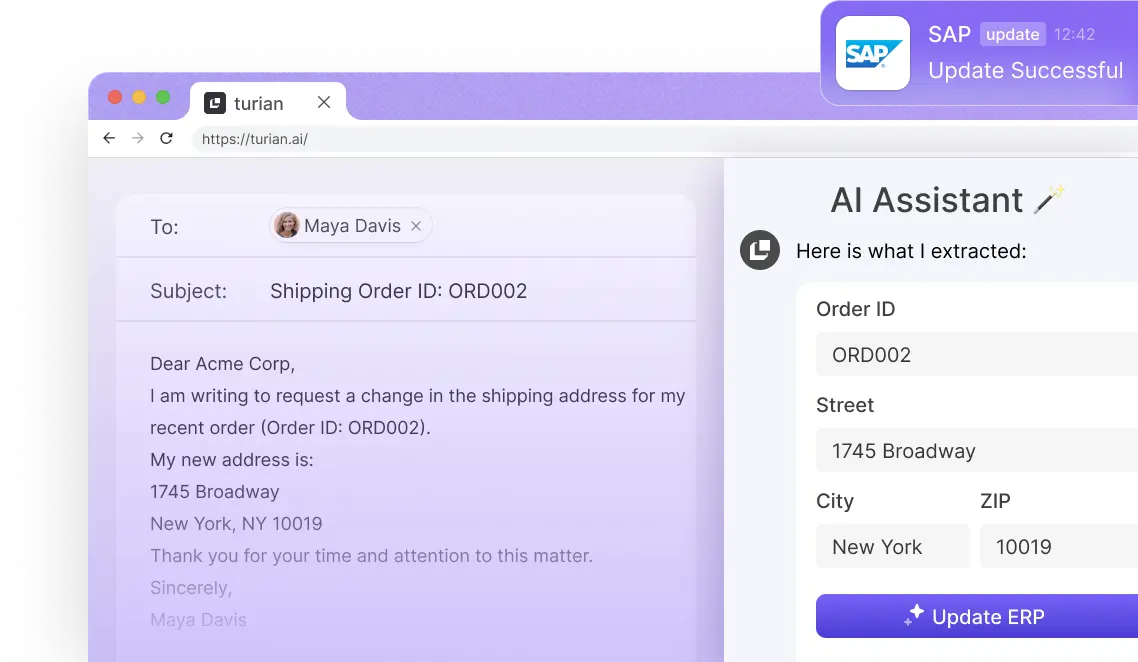

Introducing the Chrome side panel
Finding a good set of Chrome extensions can be vital to streamlining the work you do in your browser. With 137,345 to choose from — 24.9% of them targeting productivity use cases — there’s plenty of choice when picking the best ones. However, most extensions still have limitations in how they can interact with pages. Google enforces strict rules regarding user experience, leaving a lot of unfulfilled potential on the table.
There’s a new feature that will revolutionize Chrome extension development. In May 2023, Google released a new feature, the Chrome side panel API. With it, developers can create apps that live inside your browser and enable you to streamline your work. These are fully aware of everything that’s happening inside the page you’re on, so you can interact with your browser at a deeper level than before.

Work seamlessly inside your Chrome browser
Before the release of the side panel API, Chrome extensions were built on top of the user interface of their target apps or web pages. They added buttons, dropdowns or sidebars to the baseline elements of the page, offering new actions and data views.
This approach has a set of limitations:
- Google has strict rules in how extension developers can build their user interfaces. This limits the possibilities of the extension, preventing them from achieving their full potential.
- Some extensions could make the target page or app harder to use by making the user interface more cluttered or even by breaking parts of the original UI.
- And, depending on how the developers set up their extensions behind the scenes, a page reload at the wrong moment could stop a critical process, leading to inconsistent data records or errors.
With the Chrome side panel API, Chrome extensions no longer have these limitations. Instead of adding new elements to the web page, the extension lives in Chrome’s side panel, a static tab that’s separated from what you’re currently browsing—but it’s still connected and fully aware of what’s happening on the page, letting you interact with it, pushing and pulling data as needed.
Building a custom app and integrating it with the side panel is now an exciting possibility. You can put together any combination of screens, data views and buttons necessary to your workflow. And, when you connect other data sources to the app, you don’t have to go to other browser tabs to see information or run actions. The side panel is resizable, letting you split your screen in the most comfortable proportion at any time.
Finally, side panel apps don’t reload when you refresh the page you’re using. You can safely browse away to a different page and keep working on the side panel app, without losing data or interrupting core extension processes.
You can open the side panel in Chrome by clicking on the side panel icon on the top right of the screen, near your profile icon. If you have any extensions installed that support this new feature, you can click the dropdown at the top of the panel and select that extension:

Empower your B2B Gmail with Uify AI Assistant
Email is still a time-intensive task, with workers spending over one full month per year handling their inboxes. In addition to the sheer volume, the time you need to find the information to reply to each email can quickly add up.
There’s a solution to reduce the time you spend processing your emails: with Uify, you can build an AI Assistant for your Gmail inbox in the newly-released side panel.

Since conventional automation can’t recognize patterns or simulate human thinking, we brought in AI to leverage leading LLMs for the AI Assistant. Let’s explore what you’ll be able to do.
See a connected record when opening an email
A partner sends you an update on a purchase order. Before, you would have to open your ERP, look up the order, make corresponding changes and then write an email reply.

Now, the AI Assistant running in the side panel can automatically detect the purchase order in the email and pull all the relevant records connected to that email: order history from your ERP, invoicing data from your payment systems.
Extract data with AI
AI can extract data from long emails and entire threads, as well as attachments, helping you create new records or look up existing ones inside your internal systems with one click. You can quickly identify case reference numbers, order details or customer support tickets without having to comb through the message and then search for the data yourself.
Update information in your internal systems
If you constantly have to update data based on emails you receive, Uify’s AI Assistant lets you set up a way to compare the information in an email with your internal systems. You can easily see the sender’s proposed changes in the AI Assistant and approve (or correct) them with a click. These changes will be instantly synced with your ERP and internal databases.

Generate replies with AI
This is a popular option, with a lot of apps already offering ways to generate text with AI. Here’s what other apps don’t offer: generating fully contextual replies enriched with the data from your internal systems, providing a quick first draft that you’ll only have to proofread. On top of that, with the leading LLM models Uify deploys you can read and write emails in any language.

How can Uify achieve this? When you connect your databases and ERP to Uify, you can create apps to display and interact with that data. Uify offers a native OpenAI integration, so you can work with the GPT models to generate and analyze text based on your data. And, with the new Chrome side panel features, you can display the Uify apps you create in the side panel, ready to use as you browse.
Book a demo with us and discover how to turn time-consuming processes into efficient automation.
Increase productivity and reduce context-switching
Saving time is the obvious advantage but it’s not the only one. Whenever you tab out to another app, there’s a risk your attention will get caught up in a notification. When this happens, you may choose to stop replying to the email and move to another task, deferring the problem to the future; or you’ll start multi-tasking, which may end up in more tasks done but with lower overall quality.
With a side panel app like Uify’s AI Assistant, everything you need to reply to that message is next to the inbox. You can focus solely on tackling your emails and keeping your attention on the task at hand. No multi-tasking involved.
You can fully customize your AI Assistant to your organization’s workflows making email processing a repeatable, highly automated process. This will improve your communication with partners as you’ll be able to send detailed emails without investing extra time in writing them.
We’ve focused on supplier communication until now, but there are other areas where the side panel Uify AI assistant is useful. When you connect other data sources to Uify, your AI assistant can browse and update data inside those databases (for instance, your Salesforce, Google Sheets or Snowflake databases).
For example, by connecting your CRM data to Uify, you can display your sales pipeline data in the side panel and configure buttons to make changes or create new records. Since the app can pick up on what’s happening in your Gmail inbox, it can automatically surface the contact history of a lead when a sales rep opens an email. And, with access to AI, you can use this data to help your sales team craft the perfect message to close the deal.
This won’t completely remove the need to interact with your apps and internal systems via their dashboards. However, it helps in optimizing these apps for the actual challenges of each use case, providing the critical information and action buttons exactly when and where they’re needed.
Side panel extensions to try
While the new Chrome side panel doesn’t represent a change for all the current Chrome extensions in the Web Store, some developers have already updated theirs to leverage these features. Here are some of them.

Manganum acts as a connector to popular apps, bringing them into the side panel. It integrates with apps such as Google Keep, Todoist and ChatGPT. A digital Swiss army knife for the Chrome browser.

WebSide is an extension that lets you open a website on the side panel. While you could do the same by opening two Chrome windows and setting them side-by-side, you can use this extension to keep track of a social media feed or ask questions to ChatGPT as you search the web.

Pomodoro Focus brings a classic pomodoro timer into your browser, helping you tackle work thirty minutes at a time. You can keep track of your progress in the current pomodoro and see how many you have until you reach the end of your work day.

Say hi to your
AI Assistant!


Lernen Sie Ihren KI-Assistenten kennen!
.avif)





